QUESTION
I am not an athlete, guide, etc and am 44 years old. I live in SLC with my husband and love skiing, mountain biking, climbing and hiking. We are both at a moderate fitness level; having recovered from multiple surgeries (knee etc) and have improved significantly. However, we desperately want to break out of the ‘novice’ level and get in the best shape of our lives so we can do much bigger things (5.12 climbs, big mountains and big walls, long tough trails). We need an overall fitness program to lose weight (for me 12 lbs, my husband 45 lbs), increase endurance and strength. Where is the best place to begin? What program? Also, we are vegan. Can you help us with a diet plan?
ANSWER
Bodyweight Foundation deploys an initial assessment then bases the following progressions on the initial assessment results. This way it automatically “scales” to the incoming fitness of the athlete.
That being said, this is not an easy training plan by any means. It’s no joke and honestly, at 45 pounds overweight, I’m not sure it’s appropriate for your husband. I don’t have a plan for people in this level of de-condition. At the link above, click the “sample training” tab to see the first week of programming. I’d recommend you try the programming prior to purchase.
What programming you do on the other side of Bodyweight Foundation depends on where you are in your trip/sport season.
The way to use our mountain programming is to use season/sport-specific training plans directly before a trip or season, and fill in the gaps between sport-specific training plans with our Mountain “Base” programming.
For example, 6 weeks prior to the ski season you’d want to complete the
Dryland Ski Training Plan. During the ski season and before beginning your Spring sport-specific train up, you’d want to move into our Mountain Base programming found in the
Greek Heroine series of plans. The Mountain Base programming concurrently trains strength, work capacity, mountain endurance (running, uphill hiking under load), chassis integrity (core) and climbing fitness.
Let’s say you’ve got a Spring Break trip planned to the desert for climbing. 6 Weeks prior, you’ll want to drop out of the Mountain Base programming, and complete the
Rock Climbing Pre-Season Training Plan. After your trip, drop back into the Mountain Base programming until you’re ready to prepare for your summer trip/season, etc.
Vegan? As you can see from our guidelines, we don’t feel good nutrition takes a whole lot of knowledge. Rather, it takes a whole lot of discipline. You already know your protein sources and I suspect cutting out sugar, booze, grains, etc., 6 days/weeks will go a long way to shedding excess weight.
– Rob
QUESTION
I just came back from a 2 month deployment where the heat and humidity made running and endurance work awful to accomplish. My strength numbers are up but my endurance went out the window (found that out the hard way yesterday while doing doing pre course training). I have a mentally and physically demanding SOF course coming up in March and need to get my work cap and endurance back way up to where it used to be and better, all with keeping my strength. There will be alot of heavy rucking, heavy stretcher carries and all other sorts of cock while wearing all of my gear. While engaging in all of these great physical tasks, we will be tested on medical knowledge both theory and hands on skills. My plan is to be able to focus in the knowledge portion while being put through the ringer and not having the physical portion affect me as much if that makes sense. Given that info which plan would work best? This is not a full blown selection, it is a longer course with attributes such as those you would find on a selection. Thanks in advance.
ANSWER
By my count you have about 10 weeks prior to your course.
Here’s what I’d recommend:
Weeks Plan
One caveat to this recommendation … if you have to take a “gate” PFT or ruck at the beginning of the course my recommendations would change. Both these plans are intense, but neither focused specifically on a selection and thus don’t have focused PFT work. Also – You’re going to suffer some the first couple weeks of Humility.
– Rob
QUESTION
I was wondering what plans you would recommend from your programs to train for a Spartan Race – Beast (13 miles + 50 obstacles) in August, and I would be starting in January.
Thanks for your help.
ANSWER
If you have more than 7 weeks, I’d recommend completing
Humility prior to the Spartan Beast plan.
– Rob
FOLLOW UP
I was hoping to begin training in January to build more strength during winter and ramp up endurance in spring, then start doing a few obstacle races spring/summer and be in peak fitness for Beast in Aug.
Any recommendations?
ANSWER
By my count, you’ve got 33 weeks between Jan 1 and the second week in August. Here’s what I’d recommend
Weeks Plan
8-14
Apollo (Use a 15# weight vest instead of a 25# vest)
26 Total Rest
– Rob
QUESTION
I have been following your programs for quite some time. I am a former ultrarunner and have used your in-season and off-season training plans for ultramarathons in the past. I have done 50k-100 mile races. I recently have taken a 2 year hiatus from competitive running and focused on CrossFit style workouts, strength and shorter running distances. I am looking to get back into the competitive scene. I have my eye on a 12 mile single track trail race at the beginning of May. It is known for being one of the harder races on east. It has ascent of 5,000 feet. and is extremely technical. From there I will most likely move onto an ultramarathon in July.
Could you recommend one of your training plans to help prepare me for the climbing or do you offer personal coaching?
Thank you for your help! Love your programming!
ANSWER
If you’re just interested in training for the climbing portion of the race, and are doing your own run programming, I’d recommend the
Peak Bagger Training Plan. Complete the step ups in the plan, unloaded.
If you want a plan that combines vertical gain and running, I’d recommend the
Alpine Running Training Plan. Again, for this plan, complete the prescribed vertical unloaded.
– Rob
QUESTION
After having done a few of your plans over the last 3 years or so, I finally decided to just jump in and purchase an athletes subscription. Now I’m writing you to ask for some help. I’m looking for a new program because I’ve hit the dreaded slump/rut/wall or whatever you want to call it. I’ve been training consistently since before joining the army about 5 years ago and have made significant gains in size, strength, and endurance but I feel like I’ve slid way backwards in the last 2 months or so. Now that I have sorted out the nutrition and time issues, I’d like a recommendation to gain back strength as fast as possible (squats, bench, pull-ups, pushups, hand grip) and still make progress in the 2400m run. Big fan of barbell strength training and that’s where I have seen the most progress in the past, so I was looking at the Eccentric Strength and Super Squat program. Luckily, no injuries to contend with, just frustrating to watch guys who haven’t worked out in years go in and lift my PRs like it’s nothing while I lose strength! I’m 5’4” and 125, so I realize I won’t break any heavyweight world records for powerlifting, but I’d like to be able to maximize my performance. Currently, I’m sitting at about 140 on the bench, 215 squat, and 225 deadlift, if that means anything for this question. Sorry for the long winded e-mail, but I need some advice from a pro.
ANSWER
I’d recommend
Super Squat Strength. We’ve had great results with this progression for experienced lifters.
– Rob
QUESTION
I’m a Cadet at West Point, and I’m on the Obstacle Course Racing Team here. We compete in our Academy’s Sandhurst International Military Skills Competition as the Brigade Team, the preliminary Army/Navy Patriot Games, as well as a host of other physical and mental fitness competitions. My team just beat Navy in the Patriot Games for the third year in a row. I have 362 days until I compete against Navy as a member of this team again, and I need to work on my pullups! If you could direct me to a program or plan to best improve my pullups, I would greatly appreciate it. Thank you so much!
ANSWER
– Rob
QUESTION
For the last 7 months or so I’ve been grinding through your ruck based selection packet with lots of great results. I had to add the SFRE train up in there as well as I just recently completed SFRE and was granted the “ok” to join the training company. Due to training cycles, I won’t be able to attend selection for another months or so, bummer, but I guess more time to safely prepare never hurts. I’m currently on the valor plan and normally would work through resilience and the selection plan. But since I have so much more time I was planning on working through some of your Greek hero plans until 8 weeks out from selection. Any recommendations for plans to start after I finish resilience? Thanks!
ANSWER
Congrats on SFRE! …. After Resilience drop into the
Greek Hero plans, starting with
Hector.
Then, 8 weeks out from SFAS, complete the
Ruck Based Selection Training Plan – which is the last plan in the packet you already have. Don’t repeat the packet – having gone through them once you already have a high level of base fitness and the Greek Hero plans will build/maintain this prior to the final plan.
– Rob
QUESTION
I’ll try and be brief! I am on week 4 of the lower back program and my back is feeling SO much better! I am getting the itch to start training and lifting again and was wondering if this was smart and what training program you would recommend? I figure I need to let my body get strong again and ease into any heavy lifting but, was wanting your opinion.
ANSWER
As always – be safe and smart with loading.
– Rob
QUESTION
I am a LEO (Patrol/SWAT) and recently purchased the Gun Maker package. Loving the program so far. I was showing my brother in-law, who is also a LEO, the MTI website and the versatility in the programing. It’s obviously a huge benefit to be able to utilize programs which are created directly for our professions. I was wondering if you folks have any recommendations on programs for youth? My brother in-law has a 12 year old and 10 year old (Both are boys), and he wanted to find a solid program for them. The biggest concern, at their ages, is making sure they are training correctly and safely. They both play sports, from baseball, to football, and swimming. However, my brother in-law would like a good general fitness program for them to follow, not necessarily sport-specific. Any recommendations would be great. Thank you very much for your time!
ANSWER
At 10 and 12 years old, have your nephews start with the
Bodyweight Foundation Training Plan. This plan deploys initial assessments and bases progressions on the assessment results, includes work capacity and endurance, and overall is a great, intense, all around training plan.
– Rob
QUESTION
I am half way through the Military on ramp in the ruck based assessment packet and it is going great. The sandbag work is great and in general your training is challenging and fun.
I have been reading your articles on rucking and some of them reference the pace of the lab rats. It sounds like they are running with the 45lb ruck, 9 minute miles…
What is a decent pace for a 45lb, 3 mile ruck? How about a 10 mile? How do those numbers change when moving to the 65lb ruck?
Is there an article that talks about these concepts?
ANSWER
Think in terms of pace per mile.
10-11 minute miles is a “good” pace for a 3 mile ruck run at 45#. Faster would be an “excellent” pace.
12-13 minute miles is a “good” pace for a 3 mile ruck run at 45#. Faster would be an “excellent” pace.
12-13 minute miles is a “good” pace for a 3 mile ruck run at 65#. Faster would be an “excellent” pace.
14-15 minute miles is a “good” pace for a 3 mile ruck run at 65#. Faster would be an “excellent” pace.
– Rob
QUESTION
I just wanted to ask if you have seen a trend of muscle/weight gain in athletes using your day to day tactical programming. The reason I asked is because this seems to be happening to me. How do I avoid this, as I liked being strong and svelte. I use your dietary reccommendations by the way.
ANSWER
Depends upon where you start, and upon the individual. Nothing about the day to day “base fitness” programming, with the exception of the upper body hypertrophy work in the Law Enforcement Patrol/Detective programming, is designed to add mass, but again, everyone is different.
– Rob
QUESTION
I stumbled across your site a few days ago and really like what I see. I’m having trouble figuring out a good program to try out. I am a Detective for a police department in Indiana. 37 year old male 5’7″ 160lbs. I have been working out in my barn for the past several years mainly doing Wendler 531 and love to throw in Bruteforce Sandbag workouts. I am really looking for something more well rounded as I struggle with not overdoing one or the other. I’d like to add a bit more size to my frame while staying well conditioned. Anyway I know you guys are busy so any insight is appreciated.
Thanks!
ANSWER
Complete the plans and order in the
Spirits Series for LE Patrol/Detective – beginning with “whiskey”. These plans concurrently train strength, work capacity, upper body hypertrophy, tactical agility and chassis integrity (core) and are designed to address the fitness demands of Patrol/Detective and work as your day-to-day training. The chassis integrity work/theory deploys extensive sandbag work.
You purchase the packet, or the plans individually. At each individual plan page, click the “sample training” tab to see the entire first week of programming.
– Rob
QUESTION
I was directed to you by a buddy of mine. Some info on me. I’m 39 weigh 215 and stand at 5’8. I’m an aircraft mechanic for the military so clearly not in a combat role.
I wanted more of a well roundedness in my fitness. For PT test wise and for general fitness and health as I age. Also to be a good example to my young airmen coming into my shop.
Strength numbers.
Squat 305 3×5
Press 135 3×5
Deadlifts 315 1×5
Bench 225 3×5
Mile and half run time 15:30
My cardio is horrible.
Thanks for any help or guidance.
ANSWER
At 5′ 8″ I’d like to see you around 170-185 pounds – so I’d like to see you lose some mass. Losing this weight alone will help with your cardio.
From our stuff, I’d recommend you start with the
Military On Ramp Training Plan. Don’t be fooled – this plan is no joke, includes strength training, but also carries a significant work capacity and endurance focus. It’ll pull you away from the barbell and your comfort zone for a couple weeks, and that will be good for you.
– Rob
QUESTION
I need to get faster and quicker for football…what plan?
ANSWER
Our focus isn’t football, so I don’t have the perfect plan for you. From what we do have, I’d recommend
Achilles.
There are multiple elements to speed: raw strength, power, and sprinting speed/mechanics/work capacity. Achilles deploys our
Super Squat Strength progression for bench press and back squat – which has proven to be one of our most effective raw strength progressions for younger athletes. It also deploys the power clean – for developing hip explosion and power.
The work capacity programming in the plan is built around sprint repeats – out to 100m – great training. The plan also include our tactical agility drills – which will help with movement and quickness.
One change for you …. when the plan calls for work wearing a 25# weight vest – do the same work, but without the vest. This isn’t needed for football and my mess with your natural mechanics.
Good Luck!
– Rob
QUESTION
I’m a tactical athlete looking to make large strength, size and combat chassis improvements, specifically lower body.
I have a heavy background in swimming and endurance.
I plan to start with Hypertrophy and then move into either Rat 6 or Big 24.
Also, I’m prepping to participate in the Bataan this year. Military heavy division. Is it possible to do both kinds of training into this event?
Thanks for all the information y’all send out.
ANSWER
Don’t give too much attention to size, focus instead on strength and performance. I’d recommend
Achilles followed by
Resilience.
Bataan? If you’re serious about being competitive, complete the
Bataan Death March Training Plan the 8 weeks directly before the event. This is a sport-specific training plan made specifically for this event. To do your best at the event, complete this plan.
Following the race, complete Big 24, then drop into the Operator Sessions or complete the rest of the Greek Hero training plan.
– Rob
QUESTION
I have read through the FAQs, where to start and watched your videos. I need some help getting back into shape.I apologize as I am sure all of this is on the website.
Ill try to keep this short: 10 years army, got out to pursue masters degree and help mom with cancer. Trying to get back into Army National Guard and go to SF selection.
33 years old
175lbs
No injuries
Run time sucks: 17:00 min 2 mile.
Ruck: My rucking ability is strong compared to the rest of my attributes, but I will need to improve.
Pushups: Weak, 45ish
Pullups: 10-12 strict form, non-stop
Situps: 50-60
Overall strength is weak and does not meet the tactical standards. My results:
Back squat: 185
Bench: 155
Deadlift: 225
Push Press: 115
I need everything, especially chassis integrity and work capacity. Up to this point I have been focusing on large compounds and weight vest calisthenics for strength. I have about 4 months before getting back into the Army, and I would like to try out for selection in about 8 or 9 months.
I was thinking of Military on-ramp, followed by SFAS Ruck Selection. I need to ace a PT test in about 6 months.
Your thoughts?
ANSWER
Ideally, you’d work back from your SFAS date, but it seems you’re ways from knowing when that will be.
The exception to this would be for your pending APFT. Depending on how you feel, 4-6 weeks out from your APFT, drop out of the packet programming and complete the APFT Training Plan to specifically train up for your PFT. Once it’s over, drop back into the packet programming where you left off.
– Rob
QUESTION
I’m attending the Boulder outdoor survival school in June for 7 days. Walking 10 -30 miles a day with limited to light gear. Do you have a plan ? Thanks
ANSWER
– Rob
QUESTION
I am looking at plans for my son. He has 6 weeks to train for the Marine ROTC exam. It is different from the Cadet Fitness Exam because he has to run 3 miles (with 6-minute miles..he is currently at 7) in addition to the pull-ups and sit ups. I am wondering what you would suggest for a plan?
Thank you!
ANSWER
It sounds like your son is taking the USMC Physical Fitness Assessment. Have him complete the
USMC PFT Training Plan.
– Rob
QUESTION
I read your base fitness article and was wondering what plan(s) you would suggest to achieve those goals? (Tactical)
ANSWER
– Rob
QUESTION
I’m the OPS SGM for 3/10mtn Fort Polk LA JRTC. We currently have females in our Ranger PT program. Military athlete programs are commonly used through our program. I ask, do have anything current in regards to female preparation for ranger school?
ANSWER
We’ve worked individually with female athletes headed to Ranger in the past, and also recently conducted a
study comparing female-specific training protocols for loaded rucking and upper body pulling strength – which as you know are the major challenges for women at Ranger.
But I haven’t been convinced yet that our overall programming for Ranger needs to be changed specifically for women. Our programming is built around the fitness demands of the event, pft, selection or school – not the individual athletes – and we feel our current
Ranger School Training Plan and
Ranger School Training Packet achieve both.
The issue for women, because the standards are the same, is that because they are generally starting at a deficit, may need an extended training period. Rucking performance is greatly enhanced simply by body size – in general, bigger athletes ruck better – and women and smaller and lighter. And naturally, women have less upper body mass and strength than men – so they start at a disadvantage there.
I wish I had more for you. What we’ve found is in trying to work with women individually, they are to a person pulled away from our programming and forced to do the programming designed by their unit for Ranger. When they are pulled from our programming, we lose the data collection and hence any opportunity for analysis.
– Rob
Subscribe to MTI's Newsletter - BETA
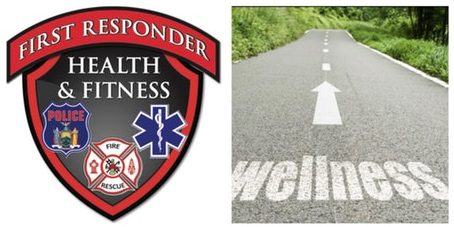
 Also, we’re not arguing that the “wellness” issues of nutrition, basic health, mental services, stress management programs, etc., do not impact first responder job performance. Depending upon the individual, these background issues could have a significant effect.
Also, we’re not arguing that the “wellness” issues of nutrition, basic health, mental services, stress management programs, etc., do not impact first responder job performance. Depending upon the individual, these background issues could have a significant effect. 
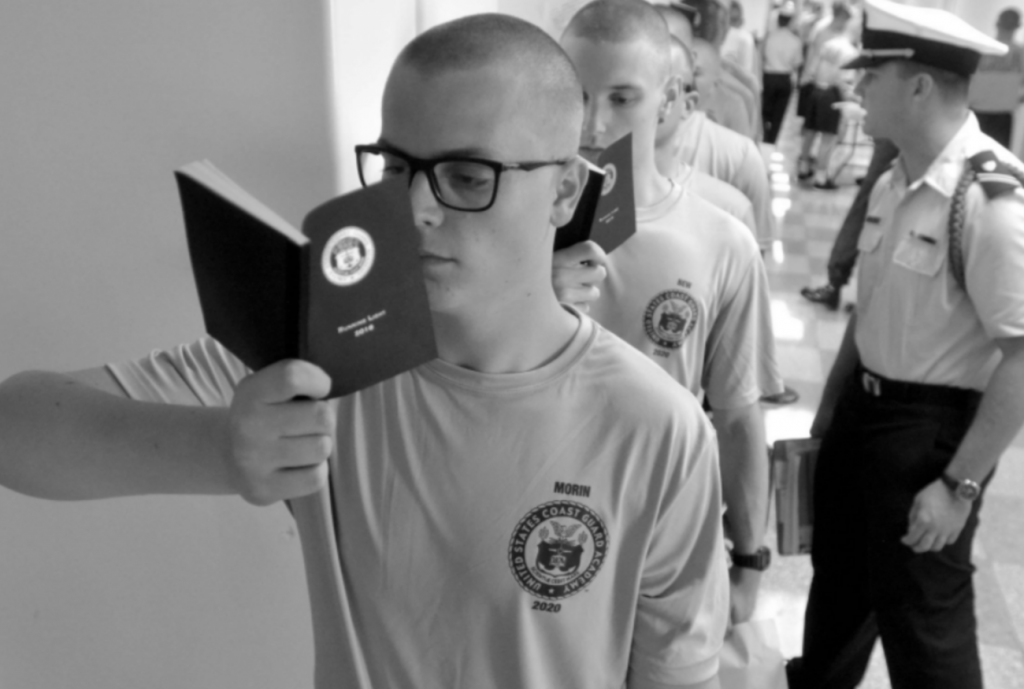
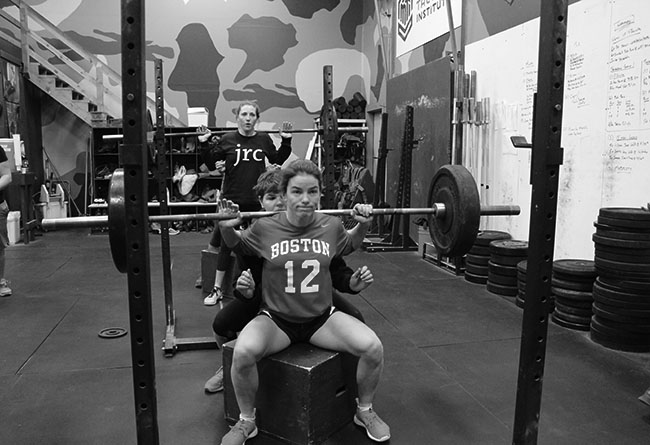



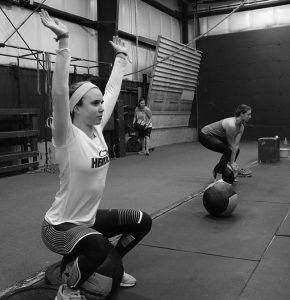
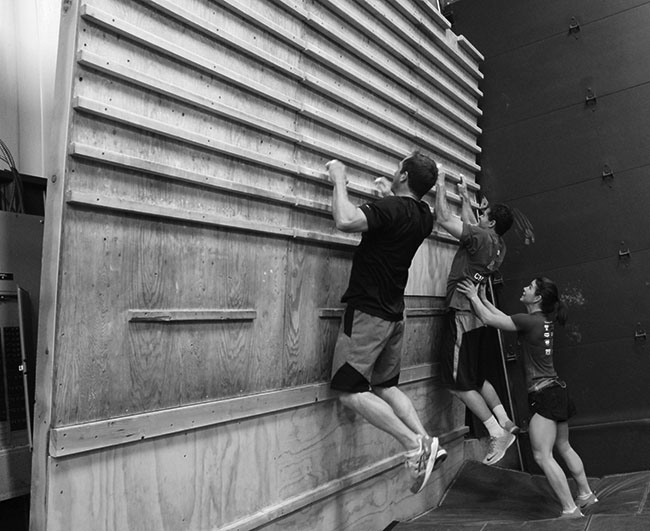
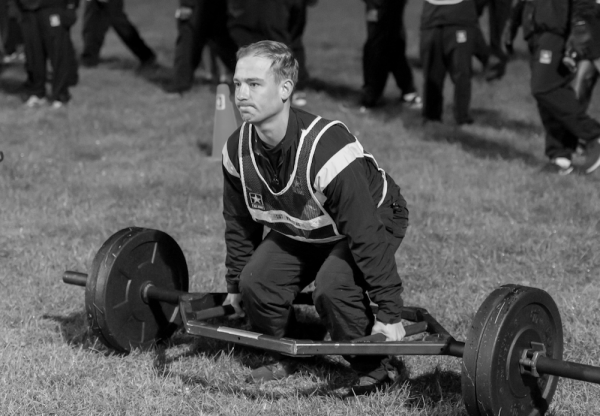

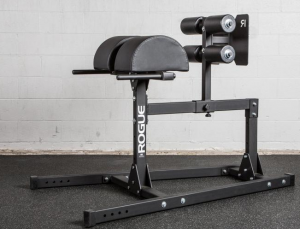 CrossFit made GHD sit-ups all the rage and for several years GHD sit-ups were a common core exercise in our former core training methodology.
CrossFit made GHD sit-ups all the rage and for several years GHD sit-ups were a common core exercise in our former core training methodology. 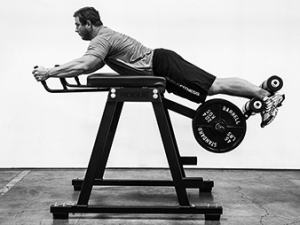 Alpine skiing is quad dominant and to add balance for several years we purposely focused on hamstring work and lute strength work.
Alpine skiing is quad dominant and to add balance for several years we purposely focused on hamstring work and lute strength work. 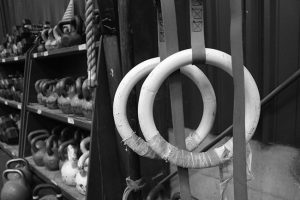 I’ve purchased several sets of rings and TRX-like devices over the years each time thinking I’d use them more than I did. We even have a set currently hung from our tall ceiling some CrossFitters who use the gym to train on their own will use for muscle ups, but that exercise never made it into my programming.
I’ve purchased several sets of rings and TRX-like devices over the years each time thinking I’d use them more than I did. We even have a set currently hung from our tall ceiling some CrossFitters who use the gym to train on their own will use for muscle ups, but that exercise never made it into my programming.  I first saw a water-filled piece of 4” PVC reading something from Dan John, and immediately built one for my gym. The “Slosh Pipe” was an interesting curiosity for a couple weeks – as the climbers and mountains guides would come in and try to break each other’s record holding it up overhead. This lasted until one climber failed and dropped on the concrete floor, breaking the end cap, and spilling water all over the place.
I first saw a water-filled piece of 4” PVC reading something from Dan John, and immediately built one for my gym. The “Slosh Pipe” was an interesting curiosity for a couple weeks – as the climbers and mountains guides would come in and try to break each other’s record holding it up overhead. This lasted until one climber failed and dropped on the concrete floor, breaking the end cap, and spilling water all over the place.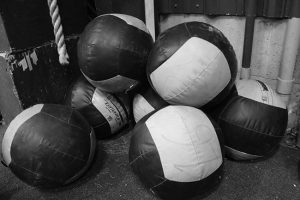 When first outfitting my gym I was sure I needed some of the big mt medicine balls I’d send athletes bouncing their butts off during squats or doing wall balls within the old CrossFit videos … that was until I saw how much they cost. There was just no way I was going to spend $100 per ball.
When first outfitting my gym I was sure I needed some of the big mt medicine balls I’d send athletes bouncing their butts off during squats or doing wall balls within the old CrossFit videos … that was until I saw how much they cost. There was just no way I was going to spend $100 per ball. 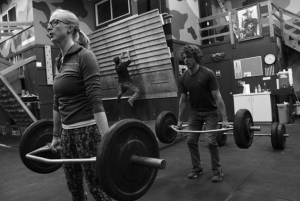
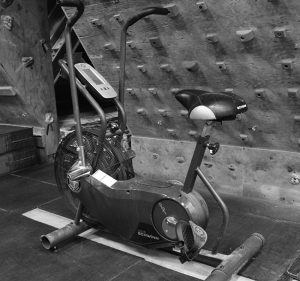 We have one of these and it actually still sits on our weight room floor, in the way. We only have one, and have never used it for hard work capacity intervals or even longer endurance efforts. The most use it’s seen is with injured, recovering athletes who are wearing a cast or brace and can’t run or do step ups.
We have one of these and it actually still sits on our weight room floor, in the way. We only have one, and have never used it for hard work capacity intervals or even longer endurance efforts. The most use it’s seen is with injured, recovering athletes who are wearing a cast or brace and can’t run or do step ups. 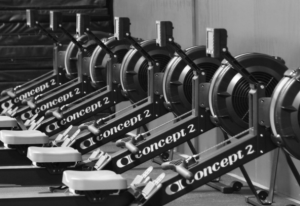 I own four old Concept 2 rowing ergs, and 3 are in the storage area. The forth stands up against the gym wall and I have injured or recovering athletes who can’t do sprints, box jumps, or whatever work capacity event we have planned for that day, row, instead.
I own four old Concept 2 rowing ergs, and 3 are in the storage area. The forth stands up against the gym wall and I have injured or recovering athletes who can’t do sprints, box jumps, or whatever work capacity event we have planned for that day, row, instead.